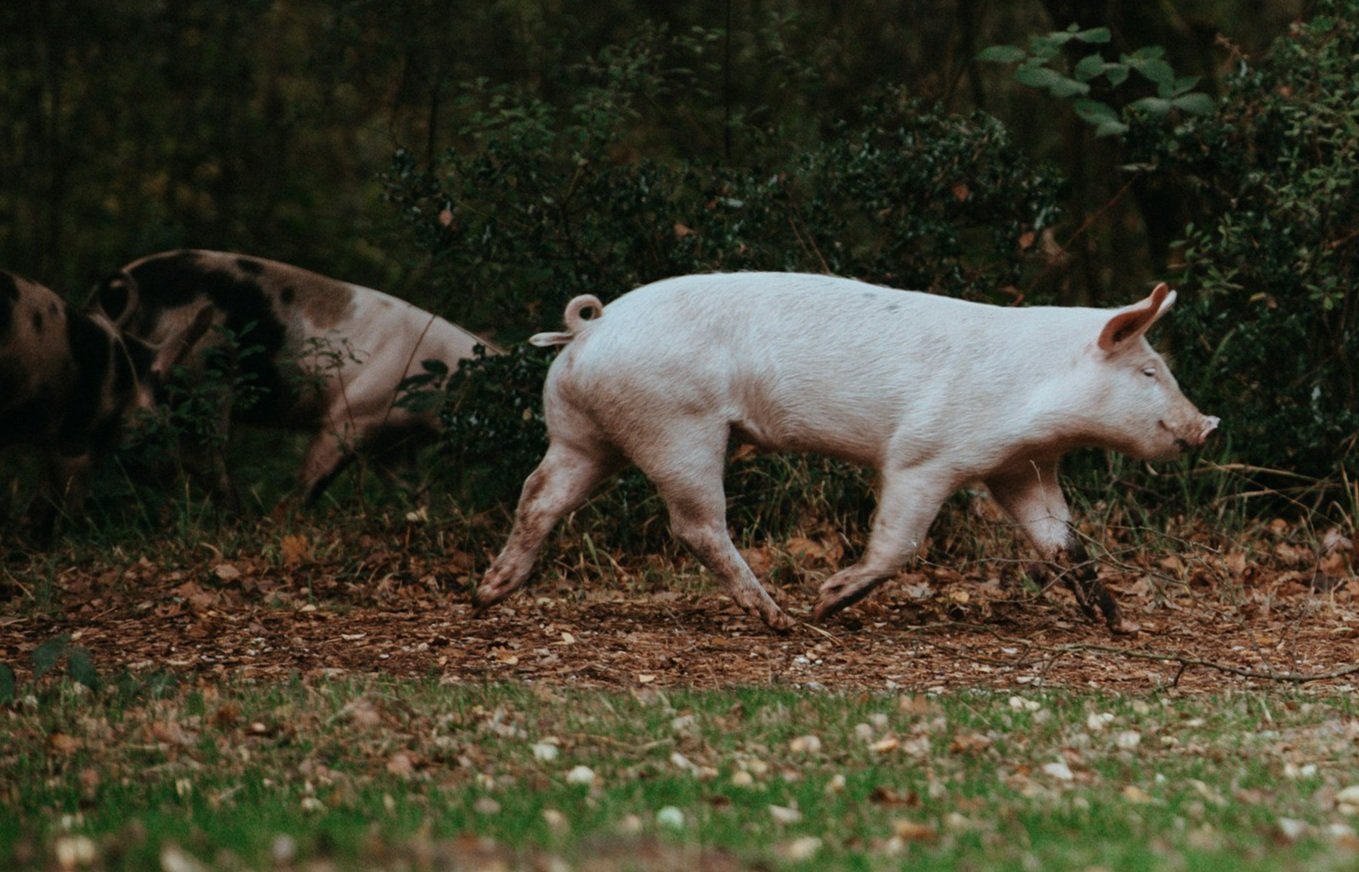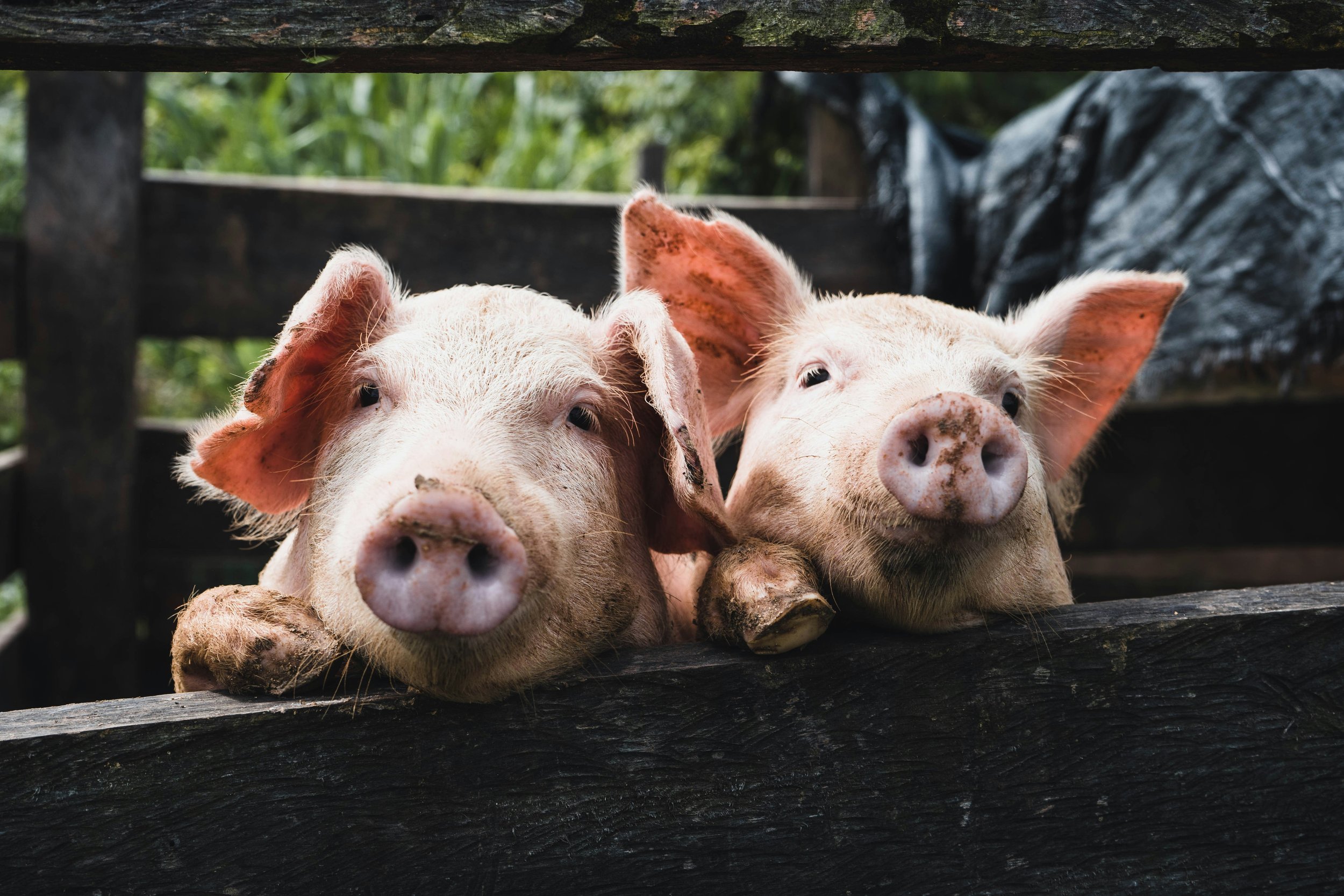
This is the story of Primrose, a little pig who loves her tail. Faced with the threat of losing her beloved tail, she discovers the harsh reality of illegal tail docking.
At the Animal Law Foundation, we want to ensure that the law that applies to tail docking is understood and enforced by those responsible. The law is clear - tail docking is not permitted and it should only be used as a last resort.
While the law clearly states that docking a pig’s tail should only be done as a last resort where measures to enrich a pig’s environment have failed, this type of mutilation remains a routine procedure in the UK. In fact, we found that in 13 investigations conducted into UK pig farms, tail docking was present on 11 farms (85%).
Like humans, when pigs are kept in inappropriate environments lacking in space and enrichment, they suffer from boredom and frustration. As a result of such constraint, pigs often demonstrate aggressive behaviours such biting each other’s tails.
Rather than avoiding this problem with suitable space and enrichment, farmers and vets resort to tail docking claiming it reduces the risk of tail biting in pig populations. But tail docking is a backwards approach – it tackles the symptom, not the cause. Pigs are social and intelligent animals and in the confined, barren environments suffered in intensive farming, tail biting is a sign of frustration.
While Primrose’s tale might have had a good ending thanks to her friend Patches helping her keep her tail, Penny wasn’t so fortunate, as is the case for 85% of pigs farmed in the UK.
LEGAL PROTECTIONS FOR PIGS
Mutilations are prohibited by animal welfare laws in the UK. Section 5 of the Animal Welfare Act 2006, section 20 of the Animal Health and Welfare (Scotland) Act 2006, and section 5 of the Welfare of Animals Act (Northern Ireland) 2011 prohibit mutilations on protected animals with regulated exceptions.
The Mutilations (Permitted Procedures) (England) Regulations 2007 is the primary legislation governing what procedures can and cannot be carried out on an animal within England. It states:
“The procedure [tail docking] may only be carried out where measures to improve environmental conditions or management systems have first been taken to prevent tail-biting, but there is still evidence to show that injury to pigs’ tails by biting has occurred.”
The regulations further stipulate that if the method is used, it must involve quick and complete severance of the tail and an anaesthetic and additional prolonged analgesia where the animal is aged seven days or over.
Veterinarians play a critical role. Tail docking may only take place with the written approval of a veterinary surgeon and they must conduct the tail docking on pigs over seven days old.
Their role is also to ensure animal welfare by advising farmers on tail biting prevention strategies, advising on compliance with regulations, and monitoring animal health and welfare. However, it looks like approvals are being signed off systematically.
The Role of Vets
Severed pigs tails
Credit: Andrew Skowron / We Animals
Putting an End to Penny and Primrose’s Pain
In the UK, an estimated ten million pigs are slaughtered each year, and whilst data varies, some data has gone as high as estimating 9.5 million, like Penny and Primrose, have their tails painfully docked (source: Animal Ask).
Tail docking is extremely painful for pigs. It is typically carried out without anaesthetic or analgesic when the piglet is a few days old. Tail docking can also lead to neuromas, which are very painful and psychologically distressing.
Example of success: the case of Finland
Finland is a prime example of a country that has banned tail docking altogether and reports the incidence of tail biting is as low as 2.5-4% (Animal Ask).
The case of Finland serves as evidence that with enough enrichment and suitable space, there is no need to resort to tail-docking.
TAKE ACTION NOW
To help us make sure tail docking is eradicated once and for all, reach out to the Royal College of Veterinary Surgeons (RCVS) asking them to investigate vets seemingly authorising illegal tail docking. Help us get the message across to those who can drive the change.
You can download our template letter and send it either by post or email.
To learn more fill in your details to the right.

DONATE TO HELP ANIMALS TODAY
Millions of animals across the UK suffer every day. With your help, we aim to ease this suffering by enforcing the laws that exist for their protection.








